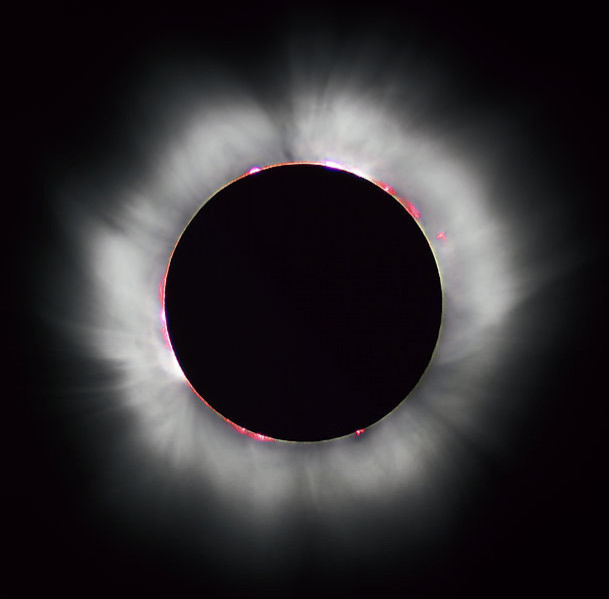Total Solar Eclipse Lures 60,000 To Northern Australia

Some 60,000 tourists from Europe, Asia and the U.S. are gathered in northern Australia this week. Hotels are completely sold out, cruise lines have moored offshore, and two dozen hot air balloons are gearing up to take to the sky above the Atherton Tableland. Why? For a chance to watch a rare total solar eclipse.
For three hours Wednesday morning the Sun, Moon and Earth will align to create one of the most spectacular sights known to mankind. If clear skies allow, the thousands gathered in Far North Queensland will watch as the land is plunged into darkness, turning day to night for about two minutes as the Moon passes between the Sun and Earth for the first time in Australia since 2002 and the last until 2023. More significantly, it will be the first total solar eclipse for Cairns and the coast since 710 AD.
The eclipse will begin to cast its roughly 150-kilometer-wide (93-mile-wide) shadow over the Kakadu National Park in the Northern Territory before moving eastward toward the Gulf of Carpentaria and into Far North Queensland. Though all of Eastern Australia will experience a partial eclipse, those in the tourism hot spots close to the Great Barrier Reef and the Daintree Rainforest along the coastline between Cairns and Port Douglas are expected to witness the best of the celestial showcase beginning at 6:38 a.m. local time.
Tens of thousands have gathered in and around Cairns for the once in a lifetime chance to witness the spectacle, according to Tourism Queensland. This is despite warnings from meteorologists that weather conditions will be less than ideal for eclipse viewing, with patchy clouds and isolated showers.
“Three charter flights with 1,200 scientists will arrive from Japan, six cruise ships will be moored off the coast, and other scientists will study the effects of the eclipse on the marine life of the Great Barrier Reef and Queensland’s rainforest birds and animals,” said Leanne Coddington, acting CEO of Tourism Queensland.
“Psychologists and astrologists will also study the effects of the eclipse on humans as natural phenomena such as eclipses are known for provoking strong emotional responses, while thousands more umbraphiles [eclipse chasers] will line the beaches of the region, including one who will experience his 52nd eclipse.”
At least 500 visitors will eyeball the action from around two-dozen hot air balloons, while others will take in a bird’s eye view of the Great Barrier Reef roof aboard heli-charters.
Assistant Minister for Tourism and Member for Cairns Gavin King said the region was already buzzing last week.
“Reports are most accommodation -- from camping grounds to five-star hotels -- is booked out and there isn’t a hire car or campervan to be had within a 100 km radius,” he said. “This is going to provide a fantastic boost for the region.”
Tourism Tropical North Queensland, or TTNQ, Chief Executive Officer Rob Giason hopes the eclipse will give the region exposure around the world.
"The Astronomical Association of Queensland and a team of scientists will be working with TTNQ and NASA to present a live web broadcast from Palm Cove, Ellis Beach and the Great Barrier Reef,” he said.
Giason anticipates an estimated 20 million people from around the world will watch the event via the live broadcast, available at www.ustream.tv/cairnseclipse2012 early Wednesday (late Tuesday in Western Europe and the Americas).
For more information, visit http://eclipse2012.org.au/
© Copyright IBTimes 2024. All rights reserved.






















